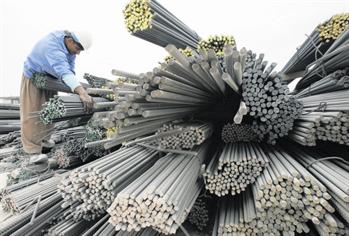Unlocking the Secrets of Commercial Building Inspections
A commercial building inspection is a detailed examination of the physical condition and safety of a commercial property. For property owners, buyers, tenants, and investors, a thorough inspection provides critical information to make informed decisions about the building.
While residential inspections are common, commercial inspections can be more complex. Commercial buildings have unique features, systems, and uses that require specialized knowledge and skills to properly evaluate. Understanding the secrets behind performing and utilizing effective commercial inspections can maximize their value for all stakeholders.
What is the Purpose of a Commercial Inspection?
The primary goal of a commercial inspection is to identify any issues or deficiencies that may impact operations, safety, or costs down the road. Inspections help uncover problems that are not readily apparent to building owners or users.
For buyers, a pre-purchase inspection is extremely important. It provides objective insights on the true condition of the property to inform negotiations and determine if any immediate repairs are needed. For tenants, an inspection can identify any landlord obligations or hazards before signing a lease.
During the occupancy period, routine inspections help building owners stay ahead of maintenance needs and avoid emergencies. As systems and components age, inspections detect issues in the early stages before they escalate. Periodic inspections also provide an opportunity to evaluate building upgrades or remodeling options.
Key Differences from Residential Inspections
While the end goal is similar, commercial inspections differ from residential in a few important ways:
Size and Complexity: Commercial buildings are typically much larger than residential properties. They contain more complex structural, electrical and HVAC systems necessary for extensive operations.
Materials and Standards: Commercial construction utilizes higher-grade building materials and must adhere to stricter regulatory standards, especially for fire resistance and emergency systems.
Varied Uses: The wide range of business uses in a commercial property influences inspection criteria. Special attention is given to business-critical systems or layouts tailored to operations.
Knowledge and Expertise: The inspector must possess specialized expertise across many technical disciplines and understand commercial building inspections codes and standards.
Reporting: Commercial reports are more rigorous with detailed narratives, benchmarks to standards, priorities for action, and cost estimates for repairs.
What Does the Inspection Cover?
Commercial inspections are extensive and wide-ranging. They involve a systematic top-to-bottom review of all physical building systems and components. Here are some of the major areas included in a comprehensive commercial inspection:
- Structural: Analysis of the foundational integrity, roof, walls, floors, ceilings, windows, and doors. Identify cracks, leaks, deterioration, or signs of unusual settlement.
- Exterior: Inspection of siding, facades, loading docks, outdoor stairs/walkways, drainage, landscaping, signage, lighting, fencing, and parking areas.
- Electrical: Review wiring, lighting, meters, service panels, switches, and backup power systems. Check for overload, damage, or fire hazards.
- HVAC: Evaluation of heating, ventilation, and air conditioning equipment, controls and distribution. Confirm proper sizing, maintenance, and energy efficiency.
- Plumbing: Assessment of supply lines, drainage, fixtures, water heating, fire suppression, and sprinklers. Check for leaks, water pressure, and regulatory compliance.
- Fire Protection: Examination of all passive and active fire containment measures, alarms, and suppression systems.
- Building Interior: Review of flooring, walls, ceilings, doors, windows. Check for water damage, trip hazards, or material failures.
- Safety: Analysis of security systems, lighting, hazardous material storage, stairwells, and emergency exits. Verify regulatory compliance.
Critical Building Systems for Focus
Some commercial building systems warrant greater attention during an inspection due to their importance for operations, costs, and safety:
Roofing: Since roof issues can lead to systemic deterioration and water damage, the age, material, and condition are carefully examined. Signs of leakage, damage, or limited remaining life are red flags.
HVAC: As a major utility cost, the efficiency and maintenance of HVAC and ventilation systems are reviewed. Outdated or improperly sized units increase expenses.
Electrical: With the extensive needs of commercial facilities, inspectors confirm the electrical system can adequately support current usage. Upgrade requirements for equipment changes or expansions are identified.
Fire Protection: Fire protection is a life safety priority. All passive and active systems are reviewed to verify proper working order and regulatory compliance.
Structural: Any signs of settling, shifting, or deterioration in structural elements require further evaluation. Damaged or overloaded foundations, walls, and roof framing reduce safety margins.
Pick the Right Inspector for Your Needs
Choosing an experienced commercial inspector is the most critical factor in getting meaningful results from the process. Below are important credentials and capabilities to look for:
- Formal Training and Certification: There are several reputable inspector certification programs that validate extensive training across all building systems and compliance areas. Many require years of experience too.
- Field Experience: Look for an inspector with significant hands-on, in-the-field inspection experience specifically for commercial properties matching your type and scale.
- Technical Expertise: The inspector should have knowledge spanning structural engineering, electrical, HVAC, plumbing, and safety systems. Professional engineering skills are a plus.
- Communication Skills: They should be able to distill complex technical issues into plain language, explain the implications, and discuss practical solutions and priorities.
- Up-to-Date on Codes: An understanding of current codes and standards is necessary to identify compliance gaps. They should know when grandfathered conditions are acceptable.
- Tools and Technology: Leading inspectors utilize state-of-the-art tools like drones and infrared cameras to conduct more thorough inspections in hard to access areas.
Conclusion
A commercial building inspection provides the deepest level of understanding of a property’s condition from objective experts. While the process requires an investment of time and money, the return from informed decision making is immense. Keeping up with inspections also leads to fewer unexpected crises and maintenance headaches.
For such a valuable tool, building stakeholders should not look at inspections as a one-time transaction. Consistent re-inspections over the occupancy lifecycle provide maximum advantage. Uncovering issues early allows problems to be tackled proactively rather than reactively after escalation when solutions become more difficult and expensive.
The secrets to success with commercial inspections involve asking the right questions, hiring experienced experts, scoping inspections appropriately, and most importantly, acting diligently on the findings. This leads to properties that operate safely, efficiently and profitably over the long run.



